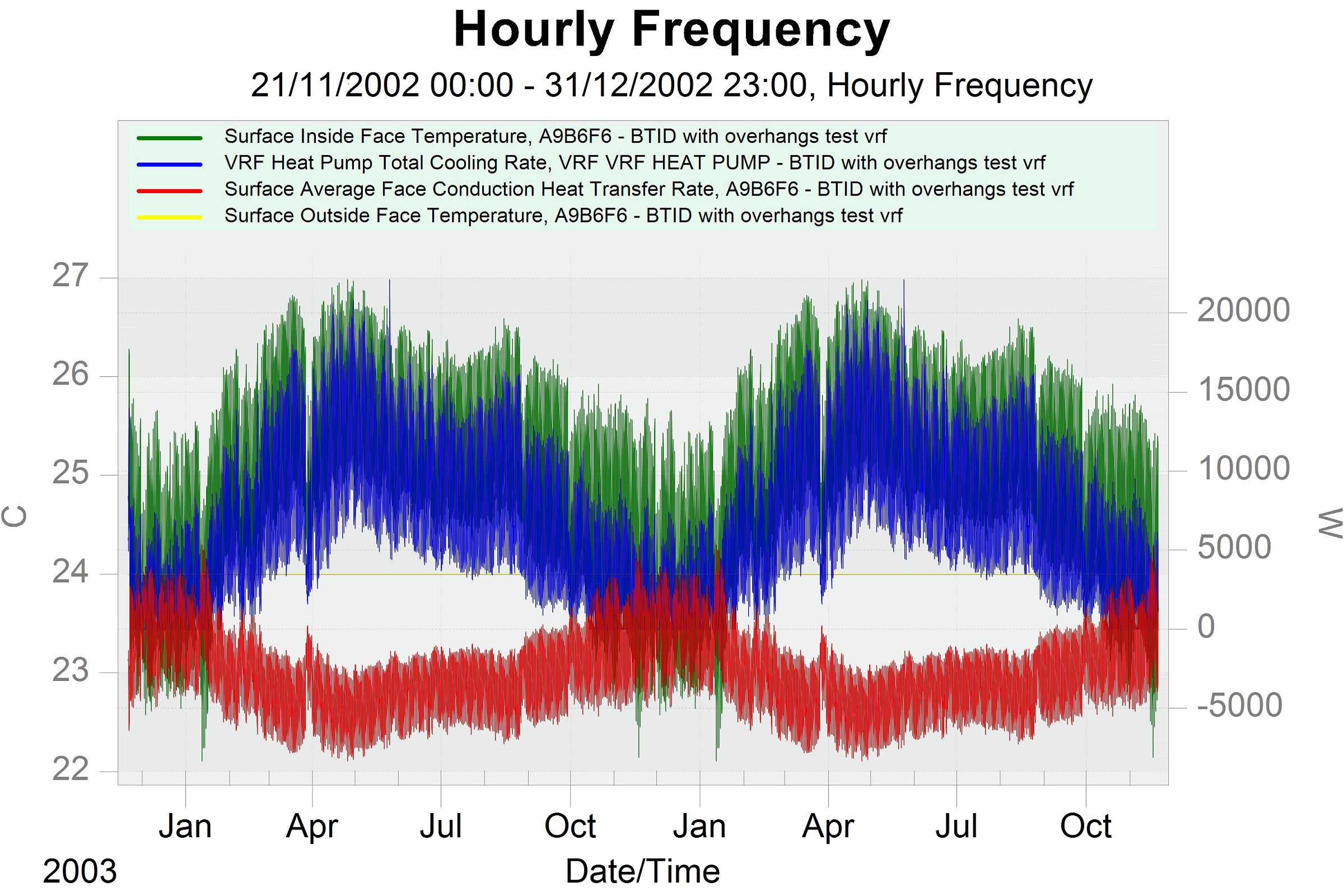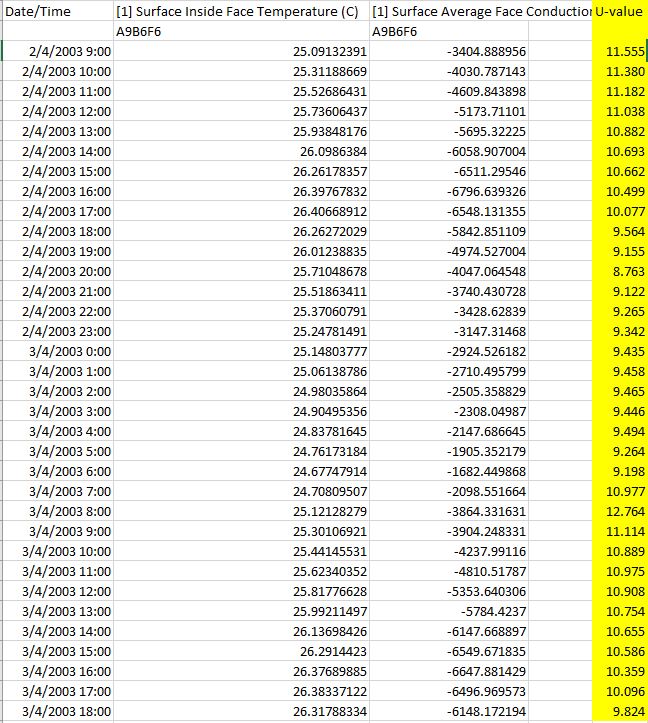E+, Huge heat transfer between floor and ground
My issue is, I have a big heat transfer between my room and the ground.
I have set the "site ground temperature :building surface" at 24 C for all the months. I have tried Slab which give me approximately the same temperature (around 24 C).
I am surprised because the temperature in my room is also 24 C and when I check the result in zone loads compenent, I have - 4000 W.
The surface of my room is 270 m2. I find this a bit much.
My floor is only concrete (20cm), no insulation. I think, I have set all the parameters correctly (U value = 3.75, conductivity = 2, ...).
What make sense for me is HT = 270 x 3,75 x delta T (surface x U x difference of temperature).
I did something wrong ? What are the habits usually when we set the parameter for ground temperature in E+ ? Or this value make sense for you and I miss something ?
Thank for your help







@Mantra Could you post a link to your model?
Here is the link : https://drive.google.com/drive/folder...
I put my slab model as well